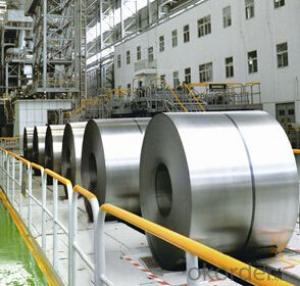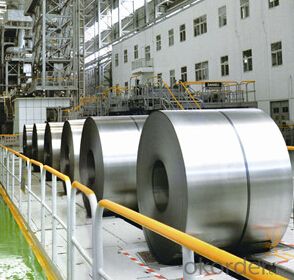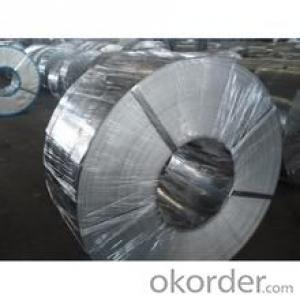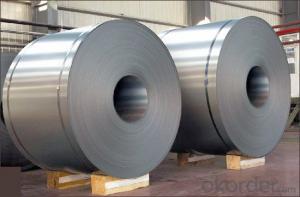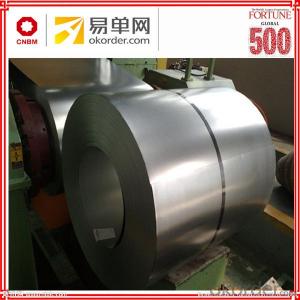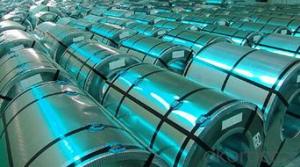Best Price ASTM 304L Cold Rolled Stainless Steel Coil
- Loading Port:
- Tianjin
- Payment Terms:
- TT OR LC
- Min Order Qty:
- 25 m.t.
- Supply Capability:
- 10000 m.t./month
OKorder Service Pledge
OKorder Financial Service
You Might Also Like
description:
Basic Info.
Model NO.:Width:1000,1219,1220,1500mm Thickness:0.2-12mm
Surface Treatment:Polished
Technique:Cold Rolled
Standard:ASTM, JIS, GB, DIN, BS
Steel Grade:304L
Categories:Stainless Steel
Brand Name:Sino East
Width:1m-2.5m
Thickness:0.3mm-100mm
Product Description
Hot Sale Stainless Steel Coil & Best Price ASTM 304L Cold Rolled Stainless Steel Coil
Specification of the 304l stainless steel coil
1) Brand: SINO EAST
2) Thickness: 0.2mm-12mm Width:1000mm 1219mm 1220mm 1250mm
3) Model Number:AISI 316
4) Standards: GB ASTM JIS DIN
5) Packing: standard international export packing or as your request.
6) Mill Test Certificate is supplied withshipment, Third Part Inspection is acceptable.
7) Trade terms: FOB TIANJIN, or CIF import port.
8) Minimum order quantity: 2 ton
9) Certificate: ISO, SGS and third partinspection.
10) Capacity: 10000 ton per month or according to the customers
The 304l stainless steel coil in our company are with high quality and reasonable price
| name | Hot Sale Stainless Steel Coil & Best Price ASTM 304L Cold Rolled Stainless Steel Coil |
| Zinc coating | 60-120g/m2 |
| surface treatment | Galvanized,Chromated,Unoiled/Oiled,Bright Finished,Spangle, |
| width | 1000mm,1219mm,1250mm Or cutting and slitting for your requirement |
| coil weight | 4-10MT, or as per customers' requests |
| Application | General Use,Home electric appliances,Roofing, Outside of the buildings,Structure,ventilation pipe with general shape,etc |
- Q: What is the tensile strength of steel coils?
- The tensile strength of steel coils varies depending on the specific grade and composition of the steel. However, on average, steel coils have a tensile strength ranging from 400 to 600 megapascals (MPa).
- Q: How are steel coils used in the manufacturing of lighting fixtures?
- Steel coils are used in the manufacturing of lighting fixtures as they provide a sturdy and durable structure for the fixtures. The coils are typically shaped and formed to create the desired shape and design of the lighting fixture, ensuring its strength and stability. Additionally, the steel coils can be coated or painted to enhance the aesthetics of the fixture, making it more visually appealing.
- Q: What are the different types of steel surface treatments for coils?
- There are several types of steel surface treatments for coils, including pickling, oiling, galvanizing, and painting. Pickling involves removing surface impurities and scale through the use of acid solutions. Oiling is a process where a thin layer of oil is applied to the coil surface to prevent rust and improve handling. Galvanizing involves coating the steel with a layer of zinc to provide corrosion resistance. Painting is another surface treatment where a protective layer of paint is applied onto the coil surface to enhance durability and aesthetics.
- Q: For the purpose of blade crafting. I need to heat treat this low quality steel i got.It's ASTM A36Is heat treatable and temperable?
- A36 is plain carbon structural steel. A36 could almost be considered junk steel. It is not suitable for cutting tools in any respect, as it is far to soft to hold an edge. A36 generally cannot be heat-treated, A36 can only be strengthened by cold-working, and even then, only up to about 60,000 psi. Heating the steel will only make it softer. The only real virtue of A36 is that it's easy to work with, it's easily cut and machined and it is very easy to weld. This is good for making steel structure, but not for knives. Probably the most popular material for knife blades is type 440C stainless. 440C is easy to work with in the un-treated state, and the heat treatment procedure is relatively simple.
- Q: What are the challenges in coil slitting?
- Coil slitting is a process used to cut large coils of metal into narrower strips of desired widths. While it offers several advantages in terms of efficiency and flexibility, there are also several challenges associated with coil slitting. One of the main challenges in coil slitting is ensuring consistent strip width accuracy. Since coil slitting involves cutting the metal coil into smaller strips, it is crucial to maintain consistent width measurements throughout the process. Any deviation in the strip width can lead to issues downstream in the production line, affecting the quality and functionality of the final product. This challenge requires the use of precise slitting equipment and careful monitoring of the process parameters. Another challenge in coil slitting is managing edge quality. The edge quality of the slit strips is critical, especially in applications where the edges need to be free from burrs or other imperfections. Achieving clean and smooth edges requires proper blade selection, positioning, and maintenance. Any defects or irregularities on the strip edges can impact subsequent processes like bending, welding, or coating. Additionally, coil slitting poses challenges related to the material itself. Certain types of metals, such as high-strength steels or alloys, can be more difficult to slit due to their hardness or brittleness. Slitting these materials may result in blade wear and premature failure, leading to increased downtime and maintenance costs. Furthermore, the presence of contaminants or surface defects on the coil can also affect the slitting process, requiring additional cleaning or preparation steps. Another significant challenge in coil slitting is handling and processing large coils. Coils can be heavy and unwieldy, making it crucial to have proper equipment and procedures in place to handle them safely. Additionally, the slitting process can generate significant amounts of scrap material, which needs to be efficiently managed and disposed of. Proper storage, transportation, and recycling of the scrap are essential to minimize waste and maintain a clean and organized working environment. In conclusion, coil slitting offers numerous benefits in terms of customization and productivity. However, it also presents challenges in maintaining strip width accuracy, managing edge quality, dealing with difficult materials, and handling large coils and scrap. Overcoming these challenges requires expertise, precision equipment, and careful process control to ensure the desired quality and efficiency in coil slitting operations.
- Q: I know aluminum is lighter but I'm looking at a 01 bianchi grizzly mountain bike which is steel. I used to ride a specialized stumpjumper m4 which was aluminum. It was quite light so I don't know if I'll like a bit heavier bike but overall what is better from those who have had both?
- Im a huge fan of steel frames. #1. they dont feel like they are bouncing off things like aluminum #2. they absorb more vibrations #3. they can be fixed if you wreck them #4. They dont weigh much more (if anymore) then aluminum #5. you are in a very limited clique #6. a steel frame will far out-live an aluminum frame. #7. it doesnt sound like your riding a tin can. #8. break a hose or cable guide, and you simply can take it down to your local muffler shop and have them weld one back on.. an aluminum frame is so fragile it will probably have to be replaced. Aluminum frames do have their pluses. #1. they are very stiff #2. you dont have to worry about rust #3. every company on the planet makes aluminum frames so they are easy to find... #4. looks. because aluminum is so stiff, there are some very radical frame designs. steel frames are just boring to look at. if you like steel frames, you wont want to go to aluminum. if you like aluminum, you could consider steel.
- Q: What are the different methods of forming steel coils?
- There are several methods used for forming steel coils, depending on the specific requirements and applications. These methods include hot rolling, cold rolling, and continuous casting. Hot rolling is the most common method used for forming steel coils. It involves heating the steel billet or ingot to high temperatures and then passing it between a series of rollers to reduce its thickness and shape it into a coil. This process is typically performed above the recrystallization temperature of the steel, which allows for better shaping and improved mechanical properties. Cold rolling, on the other hand, is a process that is performed at or near room temperature. It involves passing the steel through a series of rollers to reduce its thickness and shape it into a coil. Cold rolling is often employed to produce steel coils with precise dimensions and excellent surface finish. It can also increase the strength and hardness of the steel. Continuous casting is another method used for forming steel coils. It involves pouring molten steel into a continuous casting machine, where it is solidified into a strand. The strand is then continuously fed into a series of rollers, which shape it into a coil. Continuous casting offers several advantages, such as improved efficiency, reduced energy consumption, and better control over the steel's composition and quality. In addition to these primary methods, there are various secondary processes involved in forming steel coils. These include pickling, annealing, and coating. Pickling removes any rust or scale from the surface of the steel, ensuring a clean and smooth finish. Annealing involves heating the steel to a specific temperature and then slowly cooling it, which helps to improve its ductility and reduce internal stresses. Coating is often applied to steel coils to provide corrosion resistance or enhance its aesthetic appeal. In summary, the different methods of forming steel coils include hot rolling, cold rolling, and continuous casting. Each method offers unique advantages and is chosen based on the specific requirements of the steel product. Additionally, secondary processes such as pickling, annealing, and coating are often employed to further enhance the quality and performance of the steel coils.
- Q: What are the commonly used molds steel?
- floor scientific care of different types, I communicate approximately features of chilly paintings die metallic warmth scientific care: chilly paintings mold metallic alloying aspects quantity and style are plenty, alloying is quite complicated. The detrimental thermal conductivity of metallic, the austenitizing temperature is bigger, so the heating technique slowly, preheats or cascade warmth greater. to guard the floor of the metallic high quality, heating medium must be heavily, so the controlled ecosystem furnace, vacuum furnace, heating equipment and greater procedures, including person-friendly use, salt bath heating must be totally digitizing and purification. on the thought of accomplishing quenching, ought to apply a average cooling way. Isothermal quenching, interrupted quenching, intense rigidity gas quenching, including air cooling quenching is someone-friendly technique. with a view to greater strengthen, chilly scientific care, or nitriding floor scientific care has an considerable result and use. Salt bath scientific care must be well timed cleansing, technique protection paintings very heavily. chilly paintings die metallic is costly, chilly paintings mold areas processing complicated, long cycle and intense cost of manufacture. So the formula and operation technologies must be very careful, to circumvent high quality coincidence, confirm the protection of the production technique.
- Q: I know there is soft steel and sturdier steel they use in products. The sturdier often used for equipment that requires more durability when in operation.
- Some steel won't 'harden' very much to begin with. Mild steel found commonly around the shop/farm/house has few alloys other than carbon, and may not get the desired hardness no matter what you do. A quick test to see what type you have (mild steel vs. alloy) is to touch it to a grinding wheel.
- Q: Can steel coils be used in structural applications?
- Yes, steel coils can be used in structural applications. Steel coils are often processed into various shapes and forms, such as beams, columns, or plates, to provide structural support and strength in construction projects. The use of steel coils ensures durability, load-bearing capacity, and resistance to deformation, making them suitable for structural applications in buildings, bridges, and other infrastructure projects.
Send your message to us
Best Price ASTM 304L Cold Rolled Stainless Steel Coil
- Loading Port:
- Tianjin
- Payment Terms:
- TT OR LC
- Min Order Qty:
- 25 m.t.
- Supply Capability:
- 10000 m.t./month
OKorder Service Pledge
OKorder Financial Service
Similar products
Hot products
Hot Searches
Related keywords
